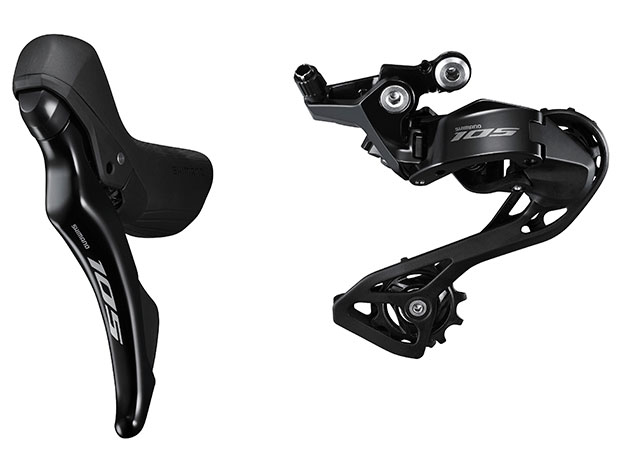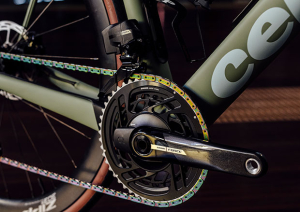
Shimano launched a new hi-midrange mechanical groupset today. The Shimano 105 R7100 12-speed groupset mirrors its 105 electronic launch, in that the crankset, BB, chain, brakeset and cassette are identical (or practically so).
The value, of course, is the value. All the products built through smokestack processes – anything you can forge, machine or stamp – remain essentially the same whether they're sold as part of the electronic or the mechanical version of 105. And, let's stop here for a nomenclature check. Mechanical 105 is labeled the 7100 series, or 7120 when it’s a hydraulic part. Electronic 105 is the 7150 series, or 7170 for a hydraulic/electronic part. The product and price difference is in the shifting only. The cost difference? For example: a pair of 7150 derailleurs will cost you $433, whereas the mechanical versions (7100 series) will set you back $110. The 7170 brake/shift levers (7170 because there are hydraulics involved) are circa $700 for the set versus $355 for the 7120 mechanical set.
Add $185 for the battery, wires to connect the derailleurs, a charger, and you’re an extra $400 into the electronic version of that groupset. Total it all up, a mechanical version of an electronic groupset saves you about $1,000. That means if you’re considering (say) a Ventum NS1 road bike, it might be a $2,900 bike versus a $3,900 with all the parts pretty much the same except for how the shift is executed.
And that assumes we’re talking road. If it’s tri then, whoops, we have the electronic/hydraulic pursuit lever/shifters and there’s another $425. Let’s digress for a moment and talk about tri because there’s always a lot of whining – for perfectly understandable reasons – about the cost of tri bikes. Ponder this: Trek has finally figured out what you all want from it. It is the 3rd-most coveted tri bike among Slowtwithers, behind Cervelo and Canyon, and clearly ahead of 4th. And it does not sell a tri bike for less than $9,000. What about the rest of humanity, that doesn’t have that kind of money to burn? This new R7100 groupset makes a lot of sense.

On the one hand, electronic is a godsend to triathlon because of the long cable runs in tri bike shifting, and because electronic shifting is precise; you can’t drop a chain; and you have shifters at the pursuits. On the other hand, Shimano has shifting pretty much dialed, especially FD shifting, even on mechanical. And, there is one performance advantage to mechanical: simultaneous FD and RD shifts (which i can't get, or efficiently get, with electronic groups). But there’s one problem…
Shimano has chosen not to invest in an upgrade in its bar-end shifter, which is unfortunate because it’s basically the same tooling that’s been around for 40 or more years and even then that product’s intended use (just like Gripshift’s original twist shifter) was shifting at the ends of road bars (typical for touring bikes and tandems at the time). It would not take much to adapt a 12sp version of this for tri. But nooo!!! I did place a call to the folks at Microshift to alert them to the fact that one product stands in the way of this groupset being used on tri bikes. (We will report on what happens on that front.)
About hood ergonomics, one might think they’d share similar (GRX-inspired) hood ergonomics with electronic 105, but this new groupset largely updates the 11sp R7020 hoods, which are made in 2 sizes and are quite ergonomic in any case.
The other value to this groupset, besides monetary, is in the available gearing. Unavailable low gearing on its road groups had always been Shimano’s Achilles heel. Not anymore. The front features a choice of 50-34 or 52-36, and the rear is available in 11-34 or 11-36. That means an even smaller than 1:1 gear (34x36) can be gotten and this is important. The body language of this groupset – shifters for small hands; low gears; affordability – seems to me an invitation to women to be to cycling what they’ve been in running for the past generation: the growth engine of the sport.



